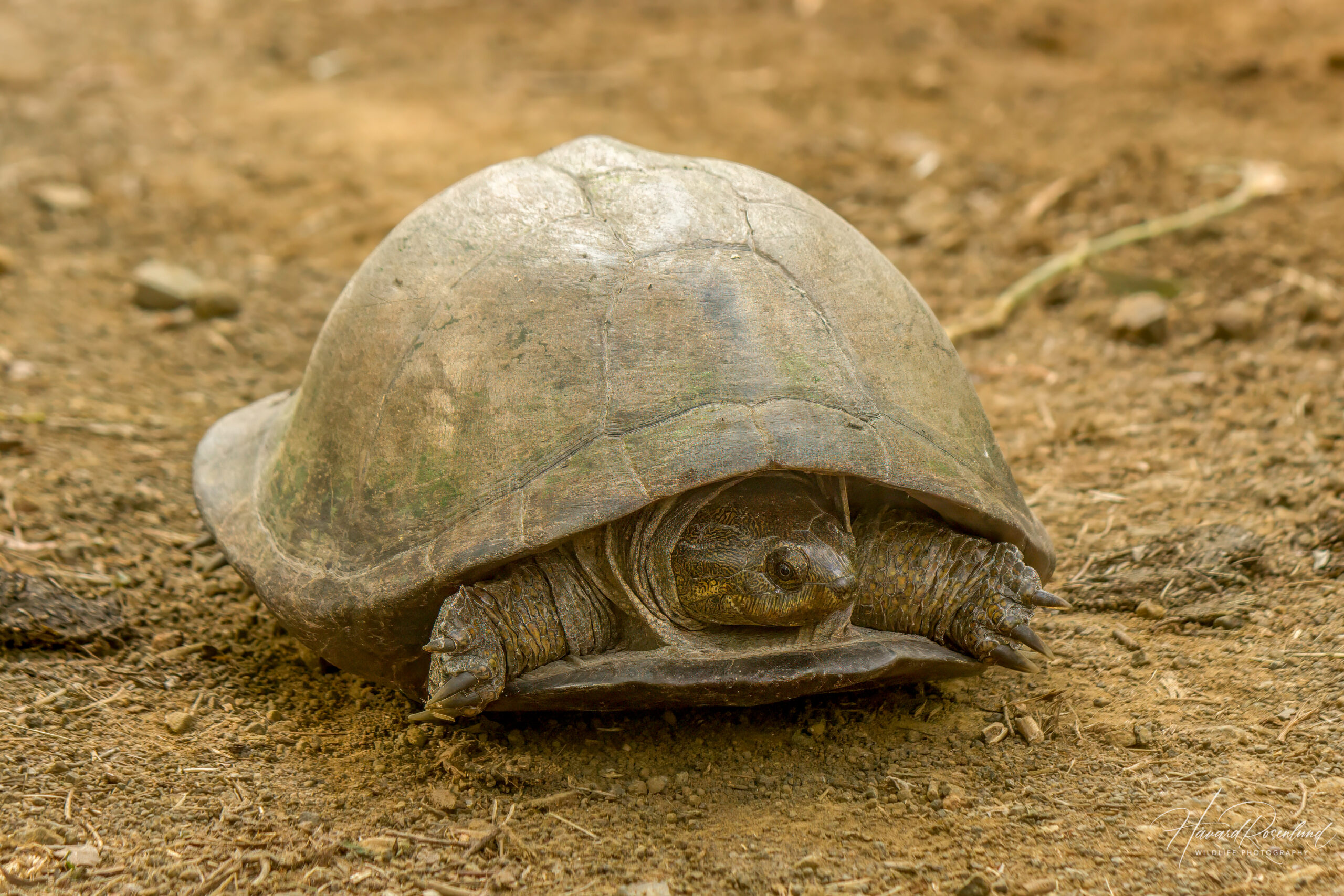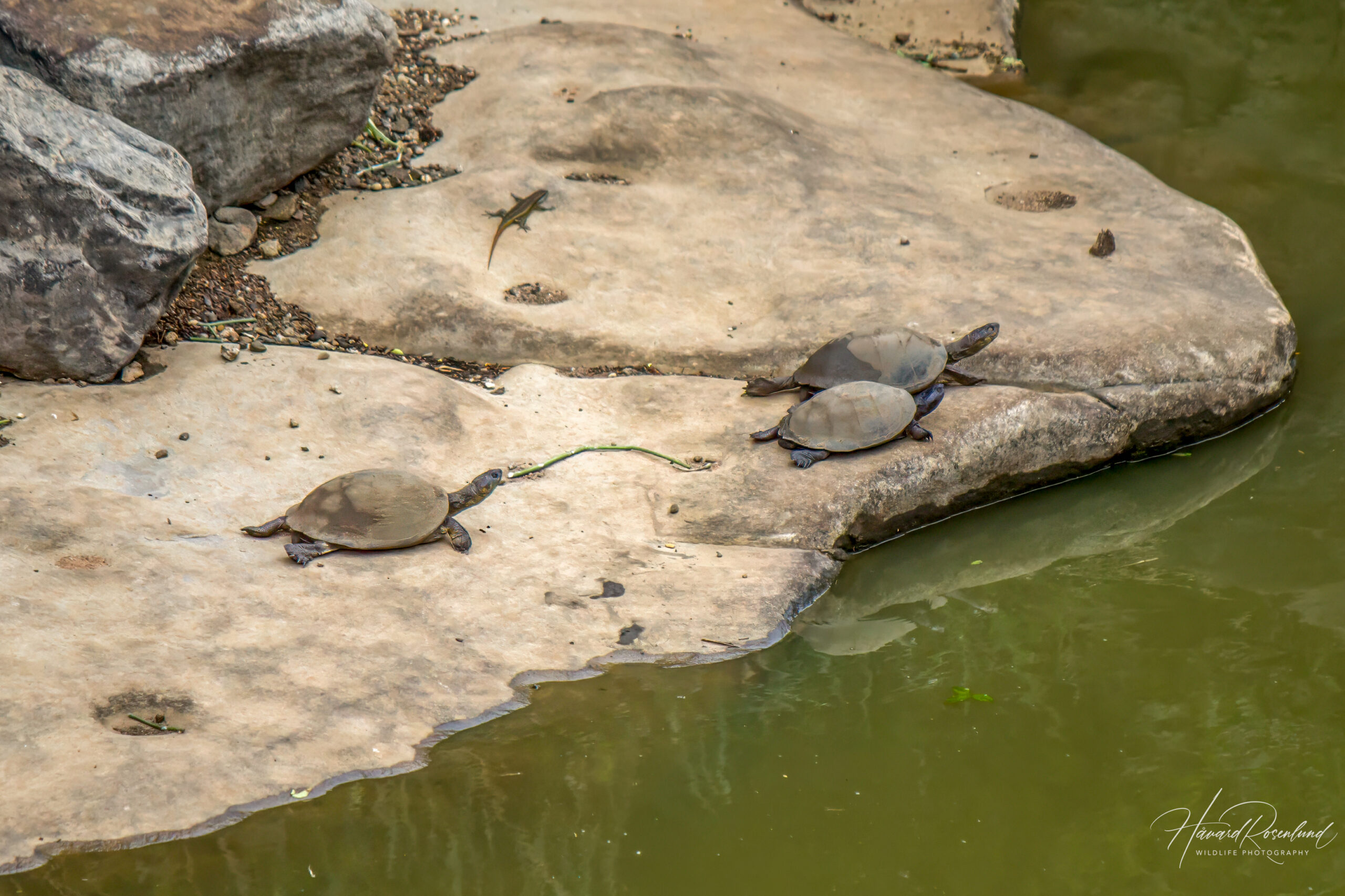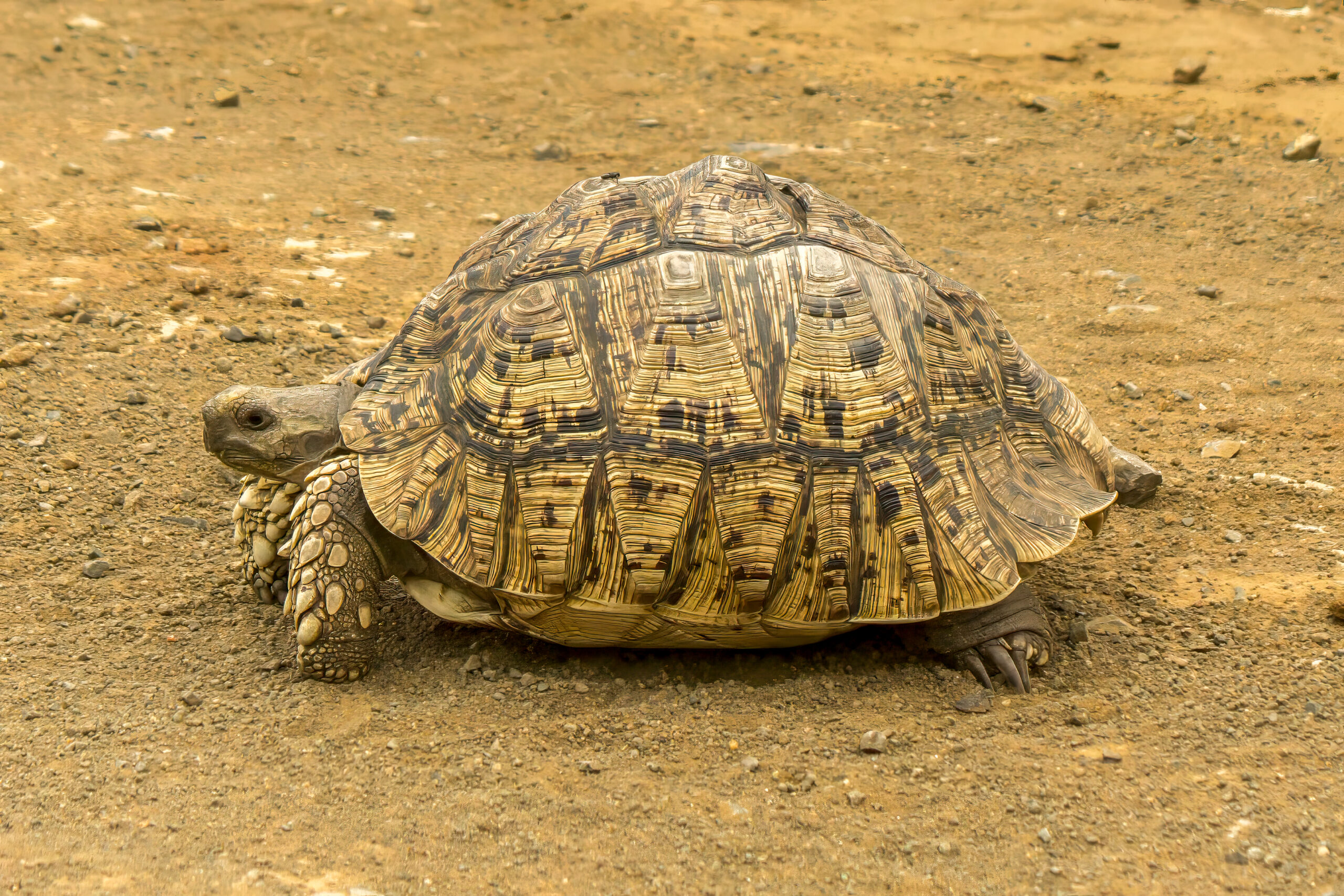Description
The serrated hinged terrapin (Pelusios sinuatus) is a freshwater turtle found in Eastern and Southeastern Africa. It is the largest species in its genus, and it can reach a straight carapace length of up to 55 cm (22 in). Females are generally larger than males, and males can be distinguished by their slightly longer tails. The serrated hinged terrapin is notable for its uniquely serrated shell edges and the hinged plastron, allowing it to close its shell tightly. Physically, it is characterized by its olive-brown to dark brown carapace and a lighter, often yellowish plastron. The serrated edges of the carapace are a key feature distinguishing it from similar species, along with its broader, flatter head.
Diet & habitat
The serrated hinged terrapin primarily resides in freshwater habitats like slow-moving rivers, swamps, and marshlands, favoring areas with abundant vegetation. Its diet is omnivorous, consisting of aquatic invertebrates, small fish, and plant material. This terrapin is known for its opportunistic feeding behavior, often lying in wait to ambush prey or scavenging for food.
Reproduction
The breeding season for the serrated hinged terrapin usually coincides with the rainy season. Females lay eggs in sandy or loamy soil near water bodies. The nesting behavior involves digging a hole where seven to 25 eggs are deposited and covered. Incubation periods vary based on environmental conditions, with temperature playing a significant role in determining the sex of the hatchlings.
Status
The conservation status of the serrated hinged terrapin is not well-documented, but it faces threats common to freshwater turtles, such as habitat destruction, pollution, and the pet trade. It is not yet evaluated by the IUCN.









